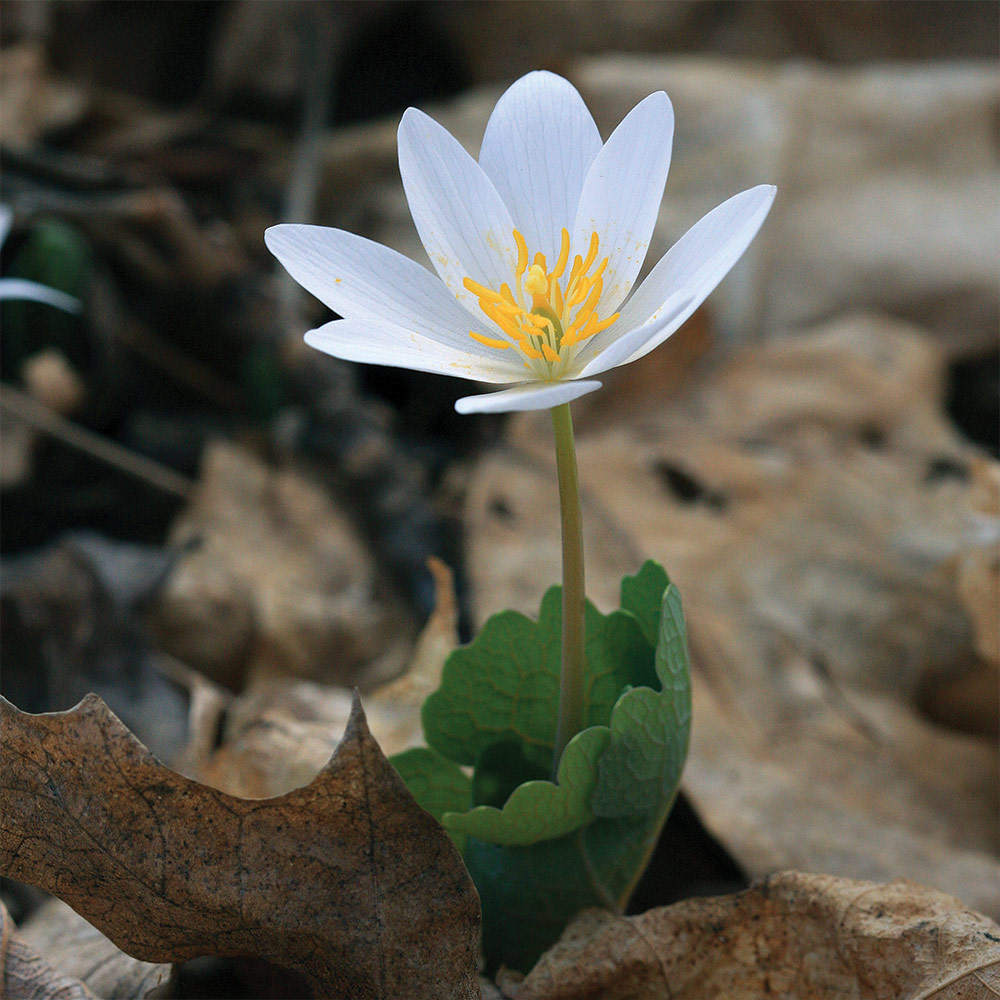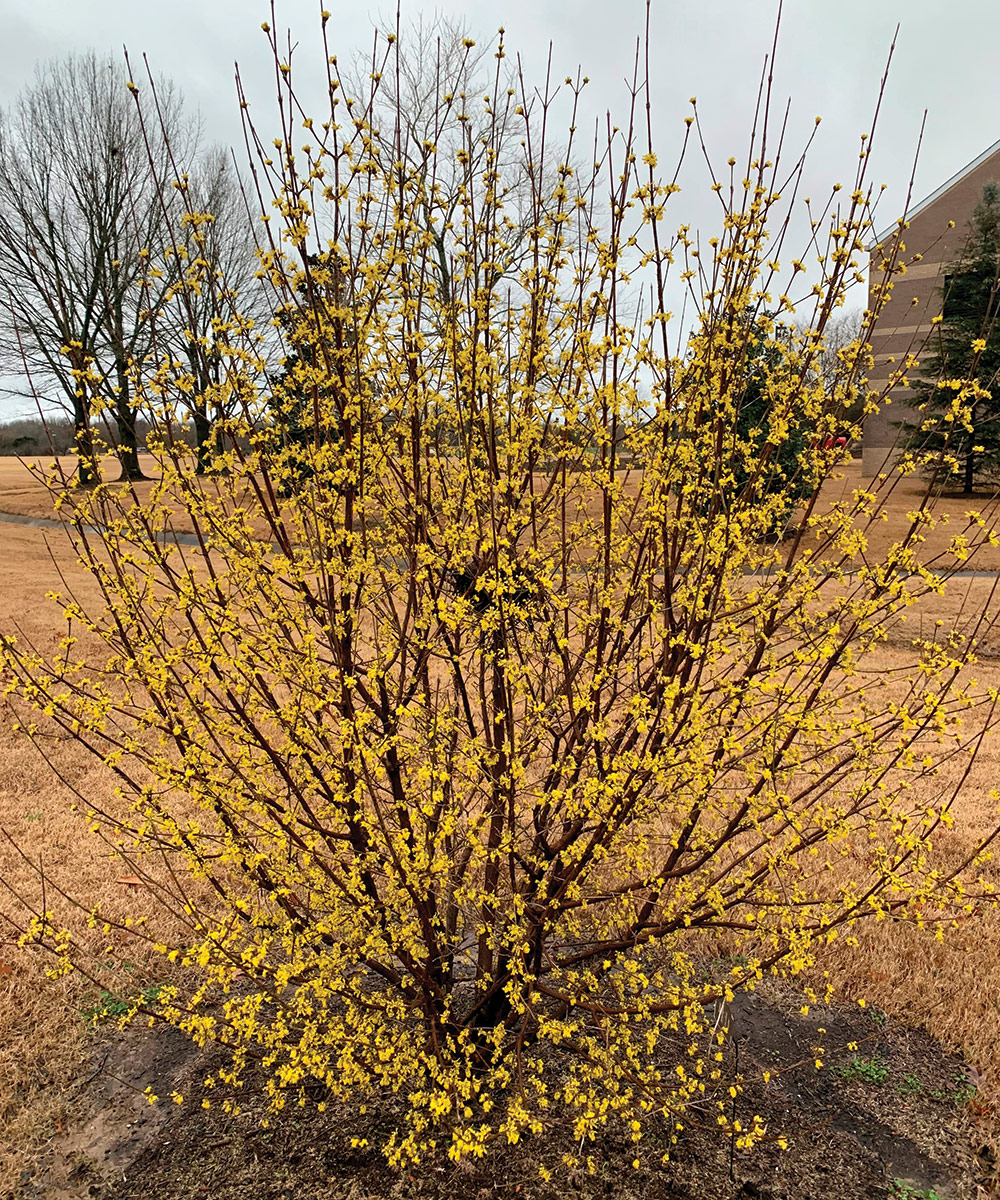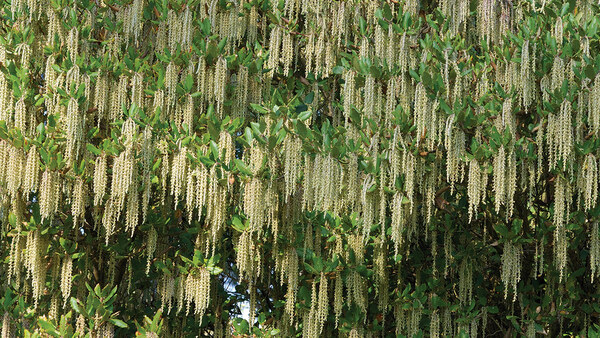
After the bright lights of the holiday season have been turned off, the dark days of winter seem to drag on forever. Gardeners begin to look through the catalogs, dreaming of the coming season and the promise of life after winter. Out in the garden our interest is captured by evergreens, colorful twigs, and interesting bark, but wouldn’t it be fun to add something that blooms extremely early to the mix?
Depending on where you live, there are plants that begin flowering as early as January, February, or March, and this is a great time to peruse a local garden center or botanical garden to see what is in bloom in your area. Some of the following plants are common but often overlooked at nurseries because they are not in bloom when most people are shopping for plants in late spring or early summer. Others on the list are more obscure and will take some searching to find. But each one of these early bloomers will bring life to garden beds at a time of year when it is most appreciated.
Garden Tasks for Late Winter or Early Spring
After the darkest days of winter have passed, most gardeners are looking for any excuse to get outside and start working. When spring fever strikes, here are some constructive ways of using that burst of energy to get your garden off to a great start.
Bloodroot is a thrill to spot after the snow melts

Name: Sanguinaria canadensis
Zones: 3–8
Size: 6 to 8 inches tall and 4 to 6 inches wide
Conditions: Partial to full shade; moist, well-drained soil
Native range: Eastern and central North America
This native perennial gets its common name from the reddish sap that is most abundant in the roots. Bright white, single flowers with 8 to 10 petals and bright yellow stamens open in early spring, just before the foliage unfolds. The multilobed, leathery leaves are grayish to blue-green and average 4 to 6 inches across. Bloodroot combines well with spring ephemerals such as Virginia bluebells (Mertensia virginica, Zones 3–8) and trillium (Trillium spp. and cvs., Zones 4–9). In warm regions where bloodroot goes dormant by midsummer, choose companion plants such as ferns and hostas (Hosta spp. and cvs., Zones 3–9) that will quickly hide the senescing foliage. Bloodroot slowly spreads by rhizomes, forming clumps, and also spreads by seed when conditions are favorable.
Pussy willow is beloved by wildlife, kids, and the young at heart

Name: Salix discolor
Zones: 4–8
Size: 10 to 15 feet tall and 6 to 12 feet wide
Conditions: Full sun to partial shade; moist to wet soil
Native range: Wet areas over much of North America
Over 100 species of willow are native to North America. They are important for pollinators and are valuable host plants for butterfly and moth caterpillars. This is one of the earliest to flower of the several species called pussy willows, which are named for their distinctive catkins. The flower buds form in late summer and are covered with gray bud scales. In midwinter the bud scale falls away as the catkins develop further, leaving a silky, silver, petal-less cluster of flower buds. As the flowers begin to open they become increasingly elongated and fluffy, but less silver. Pussy willow makes excellent cut flowers, either fresh or dried, and these should be harvested before they become fluffy. Branches placed in a vase without water will dry but still look the same as the day you cut them for years to come.
Male plants have larger, showier catkins (pictured) and put on the best show, so it is worth seeking them out. Pussy willow can be treated as a cut-back shrub, which means pruning the entire plant down 6 to 8 inches above the ground or cutting back older stems individually. Do this every few years in spring to encourage vigorous new growth of long, straight whips that will be laden with flowers the following year. Like most willows, pussy willow does not tolerate drought well.
Tip: Make more pussy willows
Salix discolor can be short-lived, but it is easy to keep it growing by rooting new plants every few years. Simply cut off a 1- to 2-foot section of a branch and push it halfway into the ground where you would like it to grow. This is best done in winter, when the plant is dormant. There’s no need to add rooting hormone because willows contain indolebutyric acid (IBA), a plant hormone that stimulates root growth.
‘Kobai’ flowering apricot infuses the garden with rosy color over many weeks

Name: Prunus mume ‘Kobai’
Zones: 6–9
Size: 15 to 20 feet tall and wide
Conditions: Full sun; acidic, well-drained soil
Native range: China, Taiwan, Korea, Japan
One of the earliest of the flowering trees, ‘Kobai’ produces an abundance of deep-pink, semi-double flowers with a sweet, spicy fragrance in early to mid-winter. It is similar in appearance and habit to some of the smaller flowering cherries, but it blooms much earlier. The blossoms of this species open so early that they can be damaged if temperatures drop into the mid-twenties. However, the flower buds have a staggered dormancy, so tight, unopened buds will remain undamaged by cold snaps and will continue to open after the weather warms. This tree is best planted in a cooler part of the garden so that the blooms will not be encouraged to open too early. In mild climates, such as the Pacific Northwest, the flowers can last for nearly a month. They are also great for cutting and forcing indoors. Weather permitting, ‘Kobai’ may set fruit forming small, rather bitter, apricots.
To encourage long shoots laden with blossoms, cut one-third of the shoots back by one-half to two-thirds. This should be done shortly after flowering is finished on plants that are well established and of good size. Pruning some each year will help the plants stay vigorous and ensure lots of pink blooms. This species can be short-lived, but planting one every five to 10 years should ensure that you always have this beauty in the garden.
Black Sea comfrey is attractive and extremely adaptable

Name: Trachystemon orientalis
Zones: 6–9
Size: 18 inches tall and 24 inches wide
Conditions: Full sun to partial shade; moist to dry soil
Native range: Southern Europe, southwestern Asia
Another unusual, precocious bloomer in my garden is Black Sea comfrey. In late winter, star-shaped bluish-purple flowers with white throats begin to emerge before the foliage. The half-inch flowers are followed by large, bristly, heart-shaped leaves rising to 18 inches tall. The leaves are held on long petioles that grow in all directions, forming a dense, crisscrossed mat that lends coarse texture to a garden bed.
Easy to grow in a wide range of soil and moisture conditions, Black Sea comfrey tolerates dry shade and, with adequate moisture, will even grow in full sun in cooler regions. It spreads by seed and rhizomes and can naturalize to form dense colonies, making a good deciduous ground cover where needed.
Cornelian cherry’s blooms are like late-winter sunshine

Name: Cornus mas
Zones: 4–8
Size: 20 to 25 feet tall and 15 to 20 feet wide
Conditions: Full sun to partial shade; average to rich, well-drained soil
Native range: Central and southern Europe, western Asia
Cornelian cherry is a member of the dogwood family that brings early season color to the garden, with a bloom time that is not too far behind that of flowering apricot. Small yellow flowers arranged in umbel-like clusters open in late winter and remain showy for about three weeks. They are most notable when planted in front of a dark background like a conifer or broad-leaved evergreen. The flowers are followed by olive-shaped fruit that ripens to a bright cherry red in late summer and can persist for months. The fruit is edible, though tart, and is best used for making syrup or preserves.
To the novice gardener, this species does not look like a dogwood when in flower; with a quick look at the leaves later in the season, however, there is no doubt. The foliage is a dark to medium green and semi-glossy. With age, the bark becomes scaly and exfoliates, adding to the appeal. This small tree makes an appealing specimen and works well in a shrub border or in a naturalized woodland setting.
‘Pink Champagne’ epimedium is a celebration of show-stopping flowers and foliage


Name: Epimedium ‘Pink Champagne’
Zones: 5–8
Size: 18 to 24 inches tall and wide
Conditions: Partial to full shade; rich, organic, moisture-retentive soil
Native range: Asia
Epimediums have always been appreciated for their critter resistance and durability, and stronger-growing cultivars are becoming available thanks to recent breeding work. From epimedium breeder Darrell Probst in Massachusetts comes the exceptional cultivar ‘Pink Champagne’, characterized by large, soft pink flowers with a raspberry-colored center. In late winter, sprays of jester’s hat–like flowers float above the newly emerging foliage in delicate sprays. Its beautiful evergreen leaves are a soft green speckled with dark burgundy blotches. Last year’s foliage should be trimmed near the ground before new foliage and flowers begin to appear in late winter. In general, epimediums are slow to establish, but ‘Pink Champagne’ is much more vigorous than the average. A tough plant that will survive in nearly any shady location, it prefers rich, moist soil with a neutral to slightly acidic pH.
‘Winterthur’ winter hazel fills the garden with fragrance

Name: Corylopsis × ‘Winterthur’
Zones: 5–8
Size: 5 to 6 feet tall and 10 to 12 feet wide
Conditions: Full sun to partial shade; moist, fertile, acidic, well-drained soil
Native range: Japan
‘Winterthur’ is a hybrid selected by Winterthur Gardens in Delaware for its exceptional show of very fragrant flowers. In late winter, clusters of soft, yellow, bell-shaped flowers hang from racemes that are up to 2 inches long. Intermediate in size, this hybrid combines the fine texture and dense branching of buttercup winter hazel (C. pauciflora, Zones 6–8) with the fragrance of spike winter hazel (C. spicata, Zones 5–8). The heart-shaped leaves are bluish green and can turn a beautiful yellow in fall. ‘Winterthur’ makes a good addition to shrub borders or woodland gardens; in warmer regions of the country, it is best grown in at least partial shade.
Variegated butterbur is surprisingly showy in late winter

Name: Petasites japonicus ‘Variegatus’
Zones: 3–8
Size: 18 to 36 inches tall and wide
Conditions: Partial to full shade; moist to wet soil
Native range: Korea, China, Japan
One of the most unusual earlier-flowering plants in my garden is variegated butterbur, which was introduced by the U.S. National Arboretum. Its flower buds begin to emerge as much as six weeks before the leaves, which can be as early as January in the South. When the fat buds first poke through the earth, they look like miniature heads of cabbage resting just above the soil surface. Once the “head” is out of the ground, the protective leaves fold back to expose a cluster of small off-white to pale yellow, asterlike flowers. The overall effect is otherworldly, a fun surprise when very little else is happening
in the garden.
Once the weather warms, green foliage splashed with yellow begins to appear. The rounded leaves are held atop 18- to 36-inch-tall petioles and can get up to 16 inches across. With a rough texture like sandpaper, the leaves don’t seem to be bothered by deer. Butterbur is best grown in the shade, particularly in the South, and requires more moisture in sunnier sites than it does in full shade. In areas with abundant moisture, butterbur will produce larger leaves, grow taller, and spread faster than in drier sites. Plants spread by rhizomes and can colonize a wet area rather quickly. Large containers sunk in the ground can be used to control the spread.
Contributing editor Jason Reeves is curator of the University of Tennessee Gardens in Jackson. He can be followed on Facebook at “Jason Reeves – in the garden.”
Sources
The following mail-order sellers offer many of the plants featured here.
- Dancing Oaks Nursery and Gardens, Monmouth, OR; 503-838-6058; dancingoaks.com
- Forestfarm Nursery, Williams, OR; 541-846-7269; forestfarm.com
- Plant Delights Nursery, Raleigh, NC; 919-772-4794; plantdelights.com
- Wilson Bros Gardens, McDonough, GA; 770-573-1778; wilsonbrosgardens.com



















Comments
I adore everything about this, especially the blue jade vine! I agree about the four seasons and envy your wonderful gardening conditions in the Northwest. I hope you had a fantastic Thanksgiving. Uno Online
Log in or create an account to post a comment.
Sign up Log in